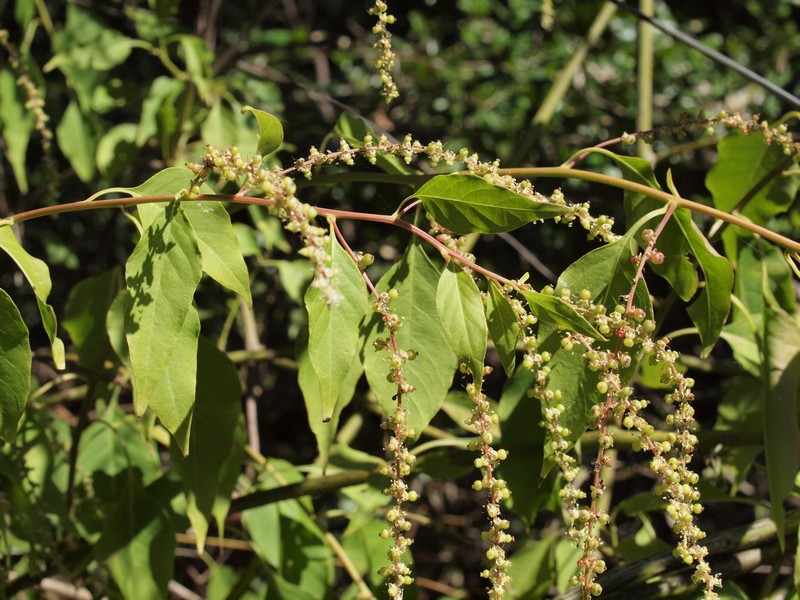Scrambling red berry, deeringia
Deeringia amaranthoides, Fam. Amaranthaceae




Deeringia usually grows as a tree top vine but occasionally flowers and fruits as a shrub (scandent shrub) attaining 6m or more. Branches are often drooping. Vine stem diameters up to 5 cm have been recorded. Concentric rings visible in transverse sections of the stem.
Locally it can be seen as a shrub in and adjacent to beach scrubs around Cape Gloucester.
| Weed Category: | |
| Weed: | No |
| Form or habit: | Vine (Climbing, Twining or groundcover), Shrub |
| Family: | Amaranthaceae |
| Leaf: | Simple Alternate Leaf blades about 2.7-15 x 1-8 cm, petioles about 0.4-3.5 cm long, grooved on the upper surface. Twigs longitudinally ribbed. |
| Flower conspicuous: | Conspicuous |
| Flower colour: |
White |
| Flower description: | White, in interrupted spikes up to 25cm long in the upper axils or in loose terminal panicles. Anthers white, filaments white, fused to form a ring or cup at the base of the ovary, pollen white. |
| Fruit conspicuous: | Conspicuous |
| Fruit colour: |
Pink, Red |
| Fruit: | Fleshy |
| Fruit description: | Fleshy, pink to bright red when ripe, about 4-7 mm diameter, 3- furrowed. Style scar present at the apex. |
| Habitat: | Beach scrub, littoral rainforest, rainforest. |
| Distribution | It occurs in Western Australia, Cape York, North-east Qld and southwards as far as south-eastern New South Wales. Altitudinal range in northern Australia from near sea level to about 800 m. Grows in rain forest, particularly the drier types. It also occurs in Asia and Malesia. |
| Food source for: | |
| Toxicity: | No toxicity known |
| Origin: | Australia; Asia; Malesia. |
| Notes: | |
| Information sources: | Australian Tropical Rainforest Plants (www.anbg.gov.au/cpbr/cd-keys/rfk/)., Flora of Pakistan (www.efloras.org)., NSW Flora Online., Whitsunday Catchment Landcare (2011) July newsletter. |



